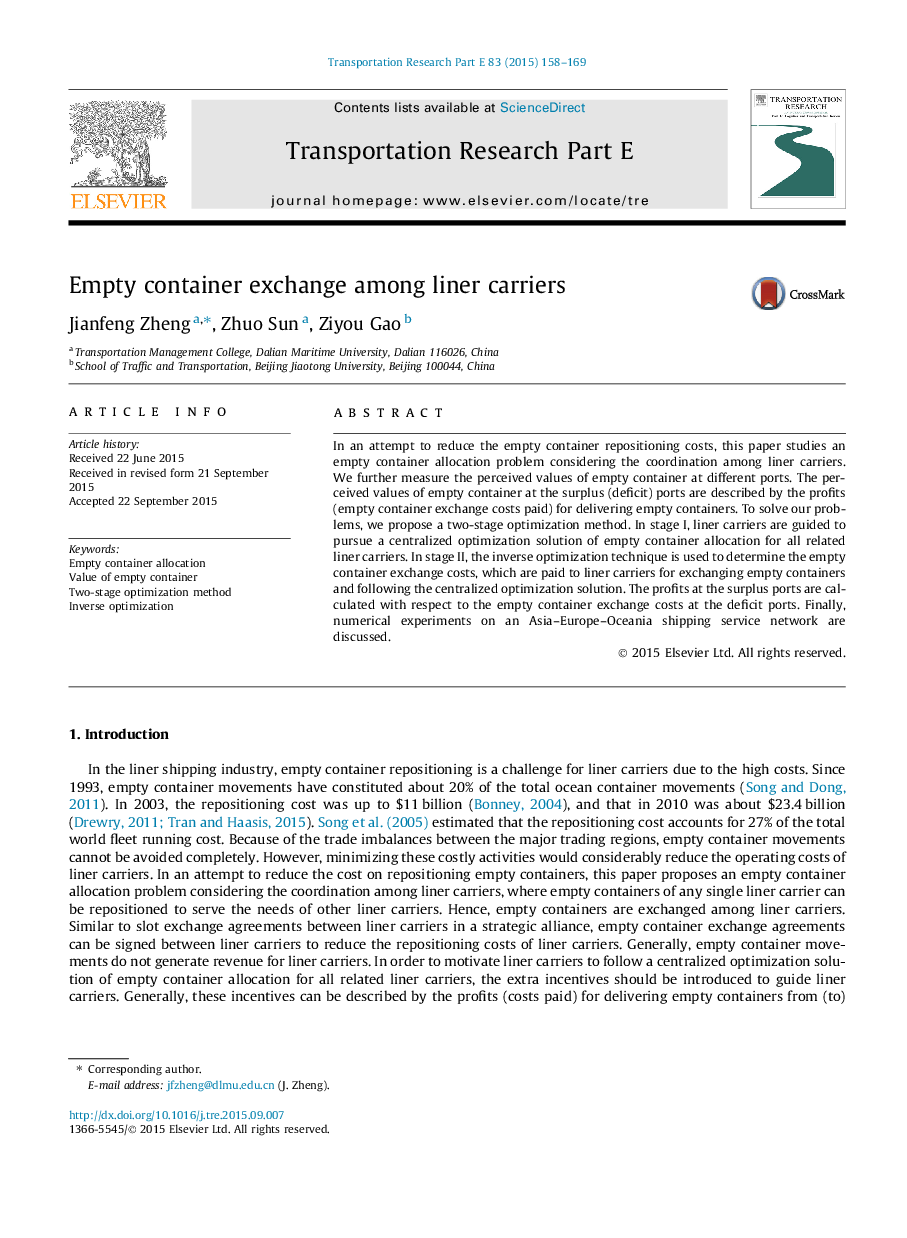| Article ID | Journal | Published Year | Pages | File Type |
|---|---|---|---|---|
| 1023050 | Transportation Research Part E: Logistics and Transportation Review | 2015 | 12 Pages |
•An empty container allocation problem considering the coordination among liner carriers.•The perceived values of empty container at different ports are discussed.•A two-stage optimization method is proposed.
In an attempt to reduce the empty container repositioning costs, this paper studies an empty container allocation problem considering the coordination among liner carriers. We further measure the perceived values of empty container at different ports. The perceived values of empty container at the surplus (deficit) ports are described by the profits (empty container exchange costs paid) for delivering empty containers. To solve our problems, we propose a two-stage optimization method. In stage I, liner carriers are guided to pursue a centralized optimization solution of empty container allocation for all related liner carriers. In stage II, the inverse optimization technique is used to determine the empty container exchange costs, which are paid to liner carriers for exchanging empty containers and following the centralized optimization solution. The profits at the surplus ports are calculated with respect to the empty container exchange costs at the deficit ports. Finally, numerical experiments on an Asia–Europe–Oceania shipping service network are discussed.
